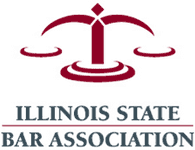121 S. Wilke Road, Suite 301, Arlington Heights, IL 60005
Home and Hospital Visits for Your Convenience
Serving Clients Across 7 Illinois Locations
Blog Category: Workers' Compensation
What if Your Employer Reduces Your Income After You Apply For Workers’ Comp?
Suffering a Traumatic Brain Injury While Working in Illinois
Frequently Asked Questions About Workers’ Compensation in Illinois
What if My Work Accident Exacerbated a Pre-Existing Condition?
What Are My Legal Options if I Was Injured in a Construction Accident?
What Can I Do if I Waited Too Long to File for Workers’ Compensation?
Can Illinois Essential Employees Receive Workers’ Comp for COVID-19?
How Does Winter Increase the Chances of an Illinois Workplace Injury?
What Are Common Occupations That Cause Workplace Injuries in Illinois?
What Are the Different Types of Workers’ Compensation Benefits in Illinois?

 Spanish
Spanish Cantonese
Cantonese



















